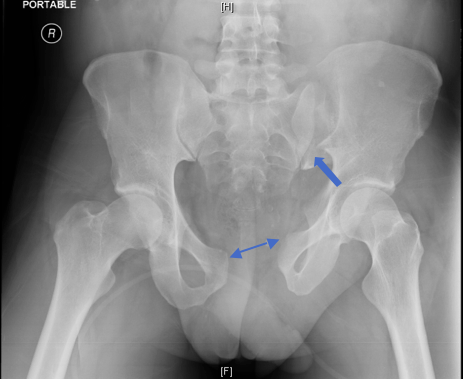Pelvis/Hip Case 12 Background
Pelvic fracture patterns are often described by the mechanisms of the forces applied, which can be described as lateral compression (LC), anteriorposterior compression (APC), or vertical shear (VS). The fractures can then be classified by applying the Young Burgess or Tile classification systems (the details of which are beyond the scope of this brief teaching). While the patterns are often mixed, the characterization is often useful in determining structural stability and hemorrhage likelihood.
In VS (also known as Malgaigne) injuries, an axial force through the legs or spine disrupts the anterior and posterior rings. Pelvic volume is increased, so the patient is at risk for uncontained hemorrhage. The pelvis provides stability in two planes: rotationally and vertically. VS injuries are unstable in both of these planes, making these the most structurally unstable pelvic injuries.
